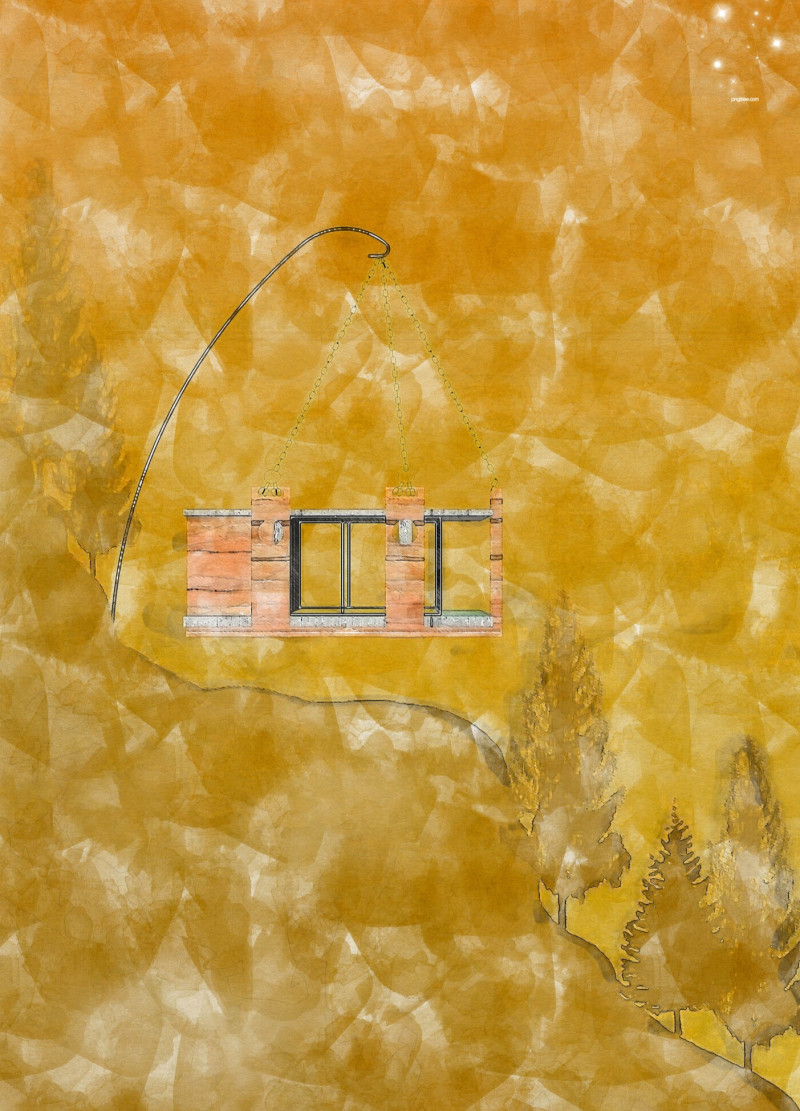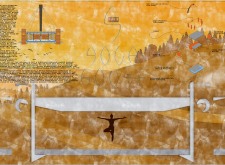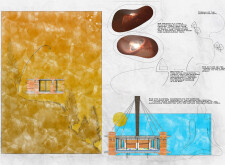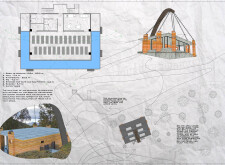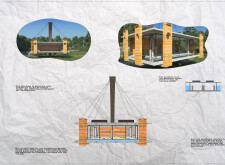5 key facts about this project
The design presents a careful blending of the built environment with nature. Located within a thoughtfully considered landscape, the structure aims to create spaces that encourage mindfulness and reflection. Serving as a wellness center, it includes areas for yoga practice and interactions with natural elements, providing a calm environment for users to connect with both themselves and their surroundings.
Concept and Integration
The design draws inspiration from the natural terrain, featuring four main columns that support the structure while enhancing its visual appeal. These columns are adorned with mirrors that create an effect of the building floating above the ground. This approach emphasizes the connection with the environment, making users feel part of the landscape rather than separate from it.
Elemental Connections
Water, earth, fire, and air play crucial roles in the overall concept. The concrete slab serves as a base surrounded by water, inviting users to engage with the elements. A circular opening atop the columns is designated for fire, which will be used during yoga sessions. This feature encourages both physical and spiritual connection, enhancing the overall experience of mindfulness.
Spatial Dynamics
Air circulation is an important factor in the design, with openings on all sides to facilitate fresh airflow. Large glass façades allow plenty of natural light and provide panoramic views of the surrounding landscape. This design choice fosters a feeling of openness, encouraging a strong link between indoor and outdoor spaces.
Sustainability and Functionality
Sustainable practices are embedded throughout the design. The roof is equipped with solar batteries, helping to meet energy needs. Rainwater collection systems are incorporated for use in irrigation and sanitary facilities, with two separate tanks to ensure efficiency. This consideration reflects a commitment to reducing environmental impact, integrating functionality with ecological awareness.
Zen gardens are placed beneath the structure, offering peaceful spaces for reflection and quiet moments. These gardens invite users to appreciate the natural beauty of the area, enriching the experience of those who visit.


